
This is a good time for medical school applicants. The best medical schools are beefing up their diversity programs and are seeing record numbers of women and minority applicants.
Understanding Medical School Admissions
Medical school admission is competitive. Currently, there are 155 accredited medical schools in the U.S. that are seeing a record 62,443 students applying in 2021-22 (AAMC). Medical schools offer far more than a Doctor of Medicine degree. Many offer PhD and Masters degrees in basic science, clinical, and research studies.
We’re glad to be part of your search and have provided information on 50 of the Best Medical Schools in the country. While it’s impossible to describe all parts of a medical school’s degree programs, curriculum, research opportunities, etc., this list will give you an overview of the school’s academic and research endeavors.
Methodology: How College Consensus Ranked the Best Medical Colleges
To create our ranking of the Best Medical Schools we averaged the results of the five most respected medical school ranking systems to come up with a Consensus Score for each school. Schools were then ranked from highest to lowest Consensus Score. This approach allows us to create a medical school meta-ranking, revealing the best of the best schools.
Data for this year’s ranking comes from the following national published rankings:
Times Higher Education World University Rankings
Only medical schools in the U.S. were considered.
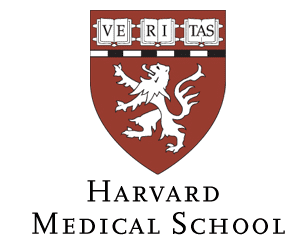 One of America’s most prestigious medical schools has been training physicians and medical professionals since 1782. Harvard Medical School (HMS) has an impressive history of excellence which includes 10 Nobel Prizes and 16 recipients in Nobel’s Medicine or Physiology, Peace categories.
One of America’s most prestigious medical schools has been training physicians and medical professionals since 1782. Harvard Medical School (HMS) has an impressive history of excellence which includes 10 Nobel Prizes and 16 recipients in Nobel’s Medicine or Physiology, Peace categories.
With a faculty exceeding 11,000, Harvard Medical School provides education and training for physicians, research PhD, masters, and postgraduate programs. The school also offers medical executive education for business professionals (MBA), as well as online, certification coursework.
Research opportunities exist in a variety of medical fields including genetics, immunology, stem cell regenerative biology, neurobiology, and more. Clinical and research affiliations are represented by some of the nation’s most distinguished centers including the Dana-Farber Cancer Institute, Boston Children’s Hospital, Massachusetts General Hospital, as well as Brigham and Women’s Hospital.
Admission is highly competitive as evidenced by 8,000 applicants in 2021. Approximately 76% of HMS students receive financial aid with an average scholarship of $54,129 for eligible students seeking a medical degree.
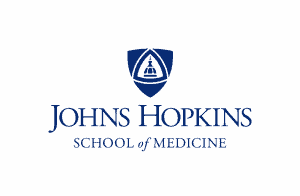 The Johns Hopkins School of Medicine grew from the 1889 philanthropy of grocer Johns Hopkins’ establishment of a hospital in Baltimore, Maryland. Johns Hopkins School of Medicine (JHSM) lives up to its pledge, “Together, We Will Deliver the Promise of Medicine” by operating 6 academic and community hospitals.
The Johns Hopkins School of Medicine grew from the 1889 philanthropy of grocer Johns Hopkins’ establishment of a hospital in Baltimore, Maryland. Johns Hopkins School of Medicine (JHSM) lives up to its pledge, “Together, We Will Deliver the Promise of Medicine” by operating 6 academic and community hospitals.
Dual medical and combination degrees are offered allowing students to expand their studies into areas of public health, medical science, and administrative business of medicine. The medical school’s Graduate Medical Education offers residencies and fellowships in numerous clinical areas. The Medical School is committed to inclusivity and has a dedicated Office of Medical Student Diversity.
You’ll find a robust research commitment at JHSM with 902 research laboratories and an alumni and faculty that holds over 2,200 patents. Working with JHMS affiliated institutes, you’ll find investigations in brain science, biomedical sciences, genetics, cell engineering and more.
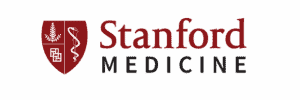 If cutting-edge research is your passion, you’d be hard-pressed to find a medical school to match Stanford University’s research, protocols development, and groundbreaking clinical therapies development. The list of medical innovations for this medical school is impressive and includes the first heart transplant in the U.S. in 1968 and the first successful heart-lung transplant in the world.
If cutting-edge research is your passion, you’d be hard-pressed to find a medical school to match Stanford University’s research, protocols development, and groundbreaking clinical therapies development. The list of medical innovations for this medical school is impressive and includes the first heart transplant in the U.S. in 1968 and the first successful heart-lung transplant in the world.
This school offers seven, dual degree programs including masters studies in public health, medical science, business, law, and others. Admission to the medical school is holistic and determined by 15 Core Competencies in four areas: Science, Intrapersonal, Interpersonal, and Thinking and Reasoning.
Faculty at Stanford University includes seven current Nobel Prize winners and substantial membership in the National Academy of Sciences and National Academy of Medicine. With laboratories and affiliated institutes, research at Stanford has the highest NIH funding level per researcher in the country. Research spans studies from basic science to disease-specific clinical trials. Stanford University also offers community-based training and research, population health, and global research and design innovation.
 Columbia University’s Vagelos College of Physicians and Surgeons (VP&S) has been educating physicians for over 250 years and is one of the nation’s most respected medical schools. The school takes a patient-focused approach and developed the narrative medicine concept to patient care emphasizing hearing the patient’s story as a vital part of the diagnosis and treatment process.
Columbia University’s Vagelos College of Physicians and Surgeons (VP&S) has been educating physicians for over 250 years and is one of the nation’s most respected medical schools. The school takes a patient-focused approach and developed the narrative medicine concept to patient care emphasizing hearing the patient’s story as a vital part of the diagnosis and treatment process.
Students participate and run clinics in underserved communities in the university’s Washington Heights area as well as the Columbia-Bassett track in a mostly rural population. VP&S utilizes state of the art simulation centers where you’ll gain experience with equipment, procedures, and patient-interaction with skilled actors in a variety of physician-patient scenarios.
The school is known for its research and development, receiving over $622 million in NIH funding and its faculty includes 3 Nobel Laureates, Howard Hughes Medical Institute: Faculty Scholars, National Academy of Medicine Members, and more.
The University of Pennsylvania is the country’s 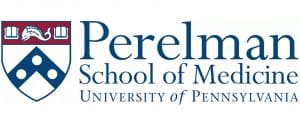 oldest school of medicine (est. 1765) and teaching hospital. Now known as the Perelman School of Medicine, the school concentrates on education, research, and patient care.
oldest school of medicine (est. 1765) and teaching hospital. Now known as the Perelman School of Medicine, the school concentrates on education, research, and patient care.
Medical students study an evidence-based curriculum emphasizing instruction in small groups to enhance interaction and self-directed learning. PSM offers combined degree MD programs with PhD (MSTP), MBA, Master of Law, Master in Public Health, and more. Research and Fellowship options are available.
Research is a crucial part of Perelman School of Medicine and it’s affiliated with six acute care facilities and students earn experience working in free community clinics and other outreach programs. The medical school is has 36 free-standing, interdisciplinary clinics in oncology, immunotherapy, diabetes, geriatric, cardiology, neurology, organ transplant, and more. Research funding is a staggering $891 million.
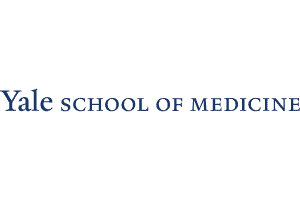 New Haven, Connecticut is home to Yale University’s School of Medicine which is a school of firsts in medical research and treatment modalities. Among the landmarks of this medical school are the first use of cancer chemotherapy, first U.S. patient x-ray, fetal heart monitoring, diabetic infusion pump, and more. Yale physicians developed the first artificial heart pump.
New Haven, Connecticut is home to Yale University’s School of Medicine which is a school of firsts in medical research and treatment modalities. Among the landmarks of this medical school are the first use of cancer chemotherapy, first U.S. patient x-ray, fetal heart monitoring, diabetic infusion pump, and more. Yale physicians developed the first artificial heart pump.
The school uses the “Yale System of Medical Education” (developed in 1920), which centers on no grades/rankings in the first two years, few examinations, and the encouragement of independent investigation. Yale offers several medical degrees, PhD and Masters programs. Educational departments range from Anesthesiology to Urology and all specialities in between. Yale boasts what’s considered to be the finest medical library in the world with over 380,000 volumes.
Yale has a robust clinical investigation commitment and was on the forefront of COVID-19 vaccine trials in adults and children. Basic and Transitional Research faculty has received over 1,300 patents and ranks 4th in NIH funding. Faculty includes 3 Nobel Prize winners, Lasker Award winners, MacArthur Genius Grant recipients, and more.
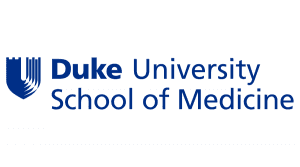 Duke University School of Medicine opened in 1930, in what would later become the Research Triangle of North Carolina. The school has 24 basic science and clinical departments with over 2,500 faculty members (including two Nobel Laureates.)
Duke University School of Medicine opened in 1930, in what would later become the Research Triangle of North Carolina. The school has 24 basic science and clinical departments with over 2,500 faculty members (including two Nobel Laureates.)
The School of Medicine provides an impressive offering of health professions training in the areas of medicine, Doctor of Physical Therapy, Masters in Biomedicine, Occupational Therapy Doctorate, as well as a Master of Science Training Program (MSTP), among others. The school has unique international experiences through the Duke-NUS Medical School, and collaborations with Duke Global Health Institute and Duke Kunshan University.
Long known for its clinical research successes, the Duke School of Medicine receives substantial NIH funding and in 2021, conducted 2,300 active clinical studies with over 17,000 enrolled patients. The school has a strong commitment with community initiatives ranging from neighborhood clinics, healthcare projects, etc.
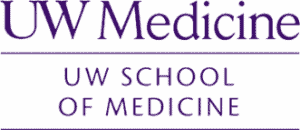 Located in Seattle, the University of Washington School of Medicine (UWSOM) is one of the nation’s best primary care programs. Founded in 1946, UW developed a partnership in 1970 with Washington, Alaska, Montana and Idaho, Wyoming to offer medical education (aka WWAMI) and became the only five-state medical school in the nation.
Located in Seattle, the University of Washington School of Medicine (UWSOM) is one of the nation’s best primary care programs. Founded in 1946, UW developed a partnership in 1970 with Washington, Alaska, Montana and Idaho, Wyoming to offer medical education (aka WWAMI) and became the only five-state medical school in the nation.
You can choose from five clinical pathways developed to meet specific career goals. The pathways provide the opportunity to arrange courses and clinical rotations for work concentrating on particular populations. The unique WWAMI partnership has led to an innovative approach providing mentors for students in areas such as patient care as well as clinical skills known as “The Colleges.
UW Medicine supports vigorous, interdisciplinary, collaborative, and clinical research programs conducted by an award winning faculty. Faculty members include recipients of Gardiner, Nobel, Lasker awards and membership in the National Academy of Medicine, Howard Hughes Medical Institute, and National Academy of Sciences.
 The Washington University School of Medicine began in 1891 and has a nationally and globally known faculty including experienced clinicians and researchers. Nineteen Nobel Laureates are associated with this school, dating back to 1913.
The Washington University School of Medicine began in 1891 and has a nationally and globally known faculty including experienced clinicians and researchers. Nineteen Nobel Laureates are associated with this school, dating back to 1913.
In addition to the medical education program, WashU School of Medicine provides quality education in the fields of physical therapy and occupational therapy, audiology and communication sciences. Over 1,200 residents and fellows train in close to 200 speciality and subspecialty areas. Clinical rotations are conducted with faculty in several of the school’s affiliated teaching hospitals in the Saint Louis area, including Shriners Hospital for Children-St. Louis and the Rehabilitation Institute of St. Louis.
The development of the Division of Physician-Scientists demonstrates the school’s commitment to research. Besides clinical trials participation, the school has developed groundbreaking work in areas of genetic testing, Alzheimer’s disease, heart disease, and oncology among them.
 The NYU Grossman School of Medicine MD program uniquely provides full-tuition scholarships to every enrolled student in its MD program to fulfill the school’s commitment to tuition-free medical training. In 2020-21, this equated to an annual $58,226 in scholarships for each student with satisfactory academic standing.
The NYU Grossman School of Medicine MD program uniquely provides full-tuition scholarships to every enrolled student in its MD program to fulfill the school’s commitment to tuition-free medical training. In 2020-21, this equated to an annual $58,226 in scholarships for each student with satisfactory academic standing.
With 29 academic departments, the University of New York has been training physicians since 1841 and enjoys a national and global reputation. Committed to a multidisciplinary approach to medical training, NYU in 2013, created the Institute of Innovations in Medical Education. Dedicated to improving medical education models, the institute developed an accelerated three-year MD as well as a four and five year dual MD/MS degrees.
Over 1,300 medical fellows and residents provide patient care across more than 156 different residency and training opportunities. Additionally, the school has supported leading-edge medical research for over 175 years and faculty/researchers include four Nobel Prize winners, 4 Howard Hughes Medical Institute Investigators, and twelve National Academy of Sciences scientists.
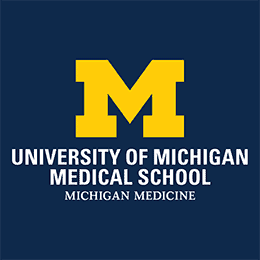 This medical school is another one of “firsts.” Since its opening in 1850, the Michigan Medical School has been the vanguard in medical education. The school was among the first in establishing a physician teaching hospital, moving the student from passive observer to active medical participant, introduced a science focused curriculum, and was one of the first major medical schools to admit minorities and women.
This medical school is another one of “firsts.” Since its opening in 1850, the Michigan Medical School has been the vanguard in medical education. The school was among the first in establishing a physician teaching hospital, moving the student from passive observer to active medical participant, introduced a science focused curriculum, and was one of the first major medical schools to admit minorities and women.
A revised,student-oriented, medical curriculum provides for smaller group learning and collaboration and introduces you to clinical participation within the first month of study. The aim is to provide you a systems-based science curriculum, professional growth working with mentors, vigorous clinical setting education, as well as a healthy life balance.
This School of Medicine has a remarkable $1.58 billion investment in medical and scientific research making it the top public university with such a commitment. U.S. News and World Report ranks 12 of the school’s medical specialty and sub-specialty programs in its 2022 Best Graduate Schools categories.
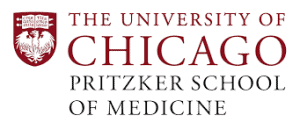 The University of Chicago graduated its first class of medical students in 1927 from what would later be known as the Pritzker School of Medicine (1968). Located on UChicago’s Hyde Park campus, this is one of the few medical schools to be located on a university’s main campus.
The University of Chicago graduated its first class of medical students in 1927 from what would later be known as the Pritzker School of Medicine (1968). Located on UChicago’s Hyde Park campus, this is one of the few medical schools to be located on a university’s main campus.
Pritzker School of Medicine offers a range of medical and healthcare academic tracks including studies in Medical Education, Community Health, Basic/Transitional Sciences, Clinical Research, Healthcare Delivery Services, Health Services and Data Science, and Global Health. Four dual degrees are awarded in addition to the MD.
Approximately, 90% of medical students work in one of the 5 student-run free community clinics. Research opportunities for students exist through a summer research program, providing opportunities to work alongside faculty members in basic sciences, translational, or clinical studies. Numerous research programs are available.
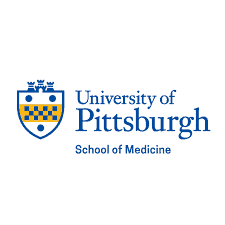 For over a century, the University of Pittsburgh School of Medicine (UPSOM) has provided one of the country’s most highly regarded medical programs. The UPSOM curriculum blends lectures with problem based studies. The school believes in early clinical training to prepare students for clerkship opportunities during their clinical years.
For over a century, the University of Pittsburgh School of Medicine (UPSOM) has provided one of the country’s most highly regarded medical programs. The UPSOM curriculum blends lectures with problem based studies. The school believes in early clinical training to prepare students for clerkship opportunities during their clinical years.
Among the five degree available are MD, Physician Science Training Program (a collaborative effort between UPitt and Carnegie Mellon University), Clinical Scientist Training Program (CSTP), Multidisciplinary MPH. Several additional educational opportunities are offered in clinical research, medicine/bioethics, Medical Grand Rounds, and others.
U.S. News and World Report regards UPSOM as one of the top, national schools for medical research and primary care training. The school has a robust investigational commitment with numerous, ongoing clinical studies and a unique student opportunity in research. The Longitudinal Research Project (LRP). This program allows students to work with faculty mentors on research projects throughout their four years of study.
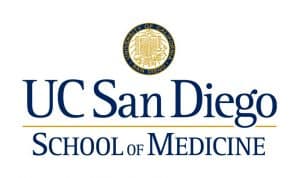 The only medical school in the San Diego region, UC San Diego School of Medicine was founded in 1968 and offers a diverse and holistic student approach to the study of medicine.
The only medical school in the San Diego region, UC San Diego School of Medicine was founded in 1968 and offers a diverse and holistic student approach to the study of medicine.
This school has a commitment to the medically underserved and is proud that 25% of the 2022 class are “members of underrepresented groups in medicine.” The school supports students by providing iPads, developing professional skills through interactional training with Standardized or Simulated Patients (SPs), and the availability of simulations through its Simulation Training Center.
You can choose to combine your MD with other fields of study and the school offers numerous options for dual degrees. Basic and clinical research is a critical part of the medical school’s mission and UC San Diego SOM is in the top 5 of public schools receiving NIH research funding and is in the top 10 of schools with intensive research programs as ranked by U.S. News and World Report.
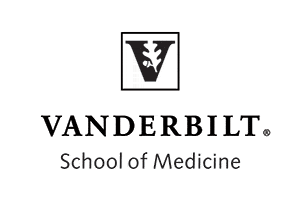 Established in 1875 in Nashville, Tennessee, Vanderbilt University School of Medicine is recognized as one of U.S. News and World Report’s top 15 Medical Schools and is in the top 10 in the nation in NIH research grants.
Established in 1875 in Nashville, Tennessee, Vanderbilt University School of Medicine is recognized as one of U.S. News and World Report’s top 15 Medical Schools and is in the top 10 in the nation in NIH research grants.
This medical curriculum focuses on core sciences, but also pays attention to the students overall experience, communication skills, and cultural considerations. The school offers not only an MD, but a unique Medical Innovators Development Program, MD/PhD (Medical Scientist Training Program (MSTP), as well as an Oral and Maxillofacial Surgery MD. Vanderbilt also provides an Interprofessional Learning Program which emphasizes the interdisciplinary nature of medicine.
Medical research is a critical part of Vanderbilt’s mission and the school’s Basic Sciences Department has been on the forefront of discovery and innovation. The school is in the top research universities to consistently receive NIH funding.
 The UCSF School of Medicine is rightfully proud of its reputation as one of the country’s top medical schools according to U.S. News and World Report, with a faculty roster which includes 17 Howard Hughes Medical Institute investigators, 118 National Academy of Medicine members, seven Nobel Laureates, and more.
The UCSF School of Medicine is rightfully proud of its reputation as one of the country’s top medical schools according to U.S. News and World Report, with a faculty roster which includes 17 Howard Hughes Medical Institute investigators, 118 National Academy of Medicine members, seven Nobel Laureates, and more.
UCSF SOM offers the Bridges Curriculum designed to train 21st century physicians. The MD program has an innovative curriculum developed around seven competencies: medical knowledge, patient care, evidenced-based learning, systems-based practice, communication skills, professionalism, and professional collaboration. You’ll be required to meet competency goals as you progress through the program. Other speciality curricula includes Doctor of Physical Therapy and a research based PhD in Rehabilitation Science.
Research is a core value for this school, with 18 departments receiving Top 10 NIH funding in 2018. Five of those departments earned a ranking #1 and twelve in the top five in NIH support and, overall, the school received $1.45 billion in funding from all sources. UCSF SOM also offers the Physician-Scientist Scholars Program (PSSP).
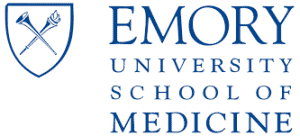 Located in one of the country’s largest metropolitan areas, Atlanta, Georgia, Emory University School of Medicine roots date to the mid-19th century to its current affiliation with the Woodruff Health Sciences Center. This center is the umbrella for Emory University’s studies in patient care, education of healthcare professionals, health and illness research, and more. Emory’s School of Medicine is affiliated with four exceptional health facilities that provides clinical experience opportunities for medical students.
Located in one of the country’s largest metropolitan areas, Atlanta, Georgia, Emory University School of Medicine roots date to the mid-19th century to its current affiliation with the Woodruff Health Sciences Center. This center is the umbrella for Emory University’s studies in patient care, education of healthcare professionals, health and illness research, and more. Emory’s School of Medicine is affiliated with four exceptional health facilities that provides clinical experience opportunities for medical students.
You can earn a MD degree, Doctor of Physical Therapy (DPT) and/or choose from dual degree opportunities in public health, business administration, and bioethics. A Master of Science Anesthesiology (MMSc) degree is available as is a MMSc degrees in Emory’s Physician Assistant and others. Emory supports one of the largest medical training programs in the country with over 1,300 residents in a range of specialties, 100+ fellowship opportunities, and first-year positions.
Research centers affiliated with this school are second to none, with studies conducted in AIDS, Neurodegenerative Diseases, Antibiotic Resistance, Translational Social Neuroscience, and more. The school is renowned for its research in brain studies, infectious diseases, pediatrics, oncology, geriatrics, and others. Ranking in the NIH top 15 in funding, research is currently conducting over 1,200 clinical trials.
 For over 150 years, The Mayo Clinic has been dedicated to the education of medical professionals and has treated 1.5 million patients from all 50 states and 130 countries. While the Mayo Clinic College of Medicine and Science’s Alix School of Medicine (MCASOM) may not be as well known, it is no less dedicated to elevating patient care. There are three locations for the medical school in Rochester, MN, Jacksonville, FL, and Phoenix/Scottsdale, AZ.
For over 150 years, The Mayo Clinic has been dedicated to the education of medical professionals and has treated 1.5 million patients from all 50 states and 130 countries. While the Mayo Clinic College of Medicine and Science’s Alix School of Medicine (MCASOM) may not be as well known, it is no less dedicated to elevating patient care. There are three locations for the medical school in Rochester, MN, Jacksonville, FL, and Phoenix/Scottsdale, AZ.
Globally recognized for its research programs, this medical school ranks in the top 15 schools in the nation for research by U.S. News and World Report. The school offers over 400 programs exploring the entirety of the medical fields in surgery, health sciences, and medicine. You can choose from the MD study or one of the eight MD-PhD tracks in the Medical Science Training Program (MSTP) program (available on three campuses).
The research reputation of the Mayo Clinic is unparalleled and reaches into areas such as Neuroscience, Molecular Pharmacology and Experimental Therapeutics, Virology and Gene Therapy, Biomedical Engineering and Physiology, among the specialities.
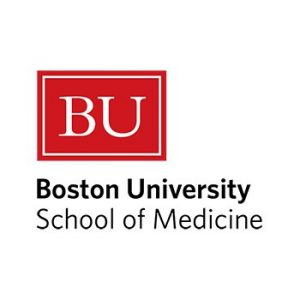 Dating to 1848, Boston University’s School of Medicine has trained students with a commitment to a solid, educational foundation, practice based training, and research innovation. This was the first US medical school to admit women and the first to graduate a black, female physician.
Dating to 1848, Boston University’s School of Medicine has trained students with a commitment to a solid, educational foundation, practice based training, and research innovation. This was the first US medical school to admit women and the first to graduate a black, female physician.
Through clinical lectures, self-directed learning, small groups seminars, and patient contact beginning in the first year, students develop both clinical skills and foundational knowledge. Among the 33 medical centers with whom BUSOM is affiliated are Boston Medical Center, veterans hospitals, Boston Children’s Hospital, Bournewood psychiatric hospital, etc.
The school has 28 basic science and clinical science departments that support vigorous biomedical research and 19 research centers and facilities. U.S. News and World Report ranks BUSOM at #30 in its Best U.S. Research Medical Schools in 2020.
 UCLA’s David Geffen School of Medicine is a comparatively young program, having opened in 1947, but has a significant national and global impact on the field of medicine through training and research. U.S. News and World Report ranks this school #12 in its Best Medical Schools: Primary Care 2021 rankings.
UCLA’s David Geffen School of Medicine is a comparatively young program, having opened in 1947, but has a significant national and global impact on the field of medicine through training and research. U.S. News and World Report ranks this school #12 in its Best Medical Schools: Primary Care 2021 rankings.
You’ll have a choice of MD degree concentrations at UCLA’s David Geffen School of Medicine which is undergoing a curriculum redesign known as HEALS. The school also provides a dual MD/Medical Scientist Training Program, a five-year MD+Masters, and the UCLA/Charles R. Drew Medical Education Program MD dedicated to having an impact on medically underserved communities.
U.S. News and World Report also ranks the SOM in its top 25 medical research programs in the country. Faculty investigators conduct trials in a wide array of specialities including genetic diseases, endocrine/metabolic, cancer, infectious disease, pediatric, genetic diseases, and several others. The research efforts encourage student participation and the institution provides several funding opportunities.
 If you’re looking for a medical school affiliated with some of the worlds most respected medical centers and facilities, you may want to explore Weill Cornell Medicine (WCM), located in New York City.
If you’re looking for a medical school affiliated with some of the worlds most respected medical centers and facilities, you may want to explore Weill Cornell Medicine (WCM), located in New York City.
Students can earn a Doctor of Medicine degree as well as opt for a joint degree. Weill Cornell Medicine participates in a Tri-Institutional MD-PhD program in collaboration with Memorial Sloan Kettering Cancer Center and The Rockefeller University to train future researchers. The WCM has options in PhD programs in biomedicine as well as business administration. Masters’ studies in biomedical science, computational biology, physician assistance, public health, etc. are offered as well.
WCM has an admirable grouping of medical centers and institutes dedicated to studies in Vascular Biology, Hepatitis C, Brain and Mind Disease, Stem Cell, Cardiovascular, and several others. Additionally, WCM has core research facilities as well as shared facilities with other research studies located in the vibrant Upper East Side Medical Research Corridor.
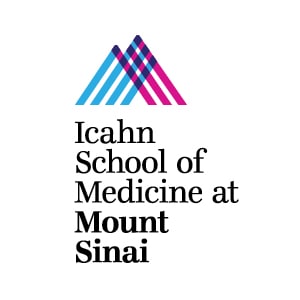 Icahn School of Medicine at Mount Sinai (ISMMS) is another well known New York medical school affiliated with a world leader in healthcare. Mount Sinai Hospital was established in 1852 and its medical school opened in 1968. The school was originally known as Mount Sinai School of Medicine and was affiliated with The City University of New York (CUNY).
Icahn School of Medicine at Mount Sinai (ISMMS) is another well known New York medical school affiliated with a world leader in healthcare. Mount Sinai Hospital was established in 1852 and its medical school opened in 1968. The school was originally known as Mount Sinai School of Medicine and was affiliated with The City University of New York (CUNY).
Offering MD degrees as well as three PhD degree programs in Biomedical Sciences, Clinical Research, as well as Neuroscience studies. The Biomedical Sciences PhD offers six Multidisciplinary Training Areas (MTA) thesis options. You can choose from dual degree and speciality programs such as the MD/PhD with the Medical Scientist Training Program (MSTP), MSW/MPH or MD/MPH. The school also provides unique programs in Global Health Scholars Program, Primary Care Care Scholars Program, and Physician Scholars Program.
IMSS supports groundbreaking, original research and receives over $400 million in NIH research funding for work ranging from epidemiology, translational research, clinical trials, as well as technology and more.
 Chicago is home to the premiere Northwestern University’s Feinberg School of Medicine. Established in 1859, this school now ranks at #15 as one of U.S. News and World Report’s top Medical Schools for Research and in the top 40 Medical Schools for Primary Care.
Chicago is home to the premiere Northwestern University’s Feinberg School of Medicine. Established in 1859, this school now ranks at #15 as one of U.S. News and World Report’s top Medical Schools for Research and in the top 40 Medical Schools for Primary Care.
The medical training at Feinberg SOM encompasses medicine, physical therapy, physician assistant, prosthetics-orthopedics. Among the doctorates, you can earn a degree in Medical Scientist Training Program, Neuroscience, The school also awards masters degrees in areas such as Biostatistics, Genetic Counseling, Public Health, and more.
With over $610 million in NIH research funding, more than a quarter of a million enrolled patients in 4,500 clinical trials, Feinberg SOM has a substantial commitment to Basic, Clinical, and Transitional Research areas. Research is also conducted in Public Health and community engagement research to better understand and address healthcare and real world challenges.
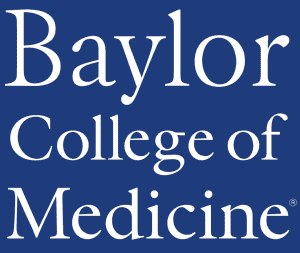 Highly respected, Baylor College of Medicine (BCM) in Houston, Texas has impressive affiliations with some of the nation’s most prestigious medical hospitals and centers. Among those are the University of Texas M.D. Anderson Cancer Center, Texas Children’s Hospital, the Menninger Clinic, etc. which provides quality clinical experiences as you earn your medical degree.
Highly respected, Baylor College of Medicine (BCM) in Houston, Texas has impressive affiliations with some of the nation’s most prestigious medical hospitals and centers. Among those are the University of Texas M.D. Anderson Cancer Center, Texas Children’s Hospital, the Menninger Clinic, etc. which provides quality clinical experiences as you earn your medical degree.
In addition to the M.D. program at BCM, you can opt to enter the dual degree programs in M.D./PhD (Medical Scientist Training Program), M.D./MBA, M.D./M.P.H., and a M.D./J.D. BCM has a significant array of PhD offerings through the Baylor College of Medicine Graduate School of Biomedical Sciences. Other degrees from which you can choose are: Doctor of Nursing Practice, Physician Assistant, Doctor of Nursing Practice Program-Nurse Anesthesia
BCM enjoys an international reputation for its cutting edge research programs in Cell Biology, Molecular Biology & Genetics, Gastroenterology & Hepatology, and ranks in the top 20 in U.S. News and World Report’s Best Global Universities. The school receives significant research funding from the NIH as well as private, sponsor awards each year.
 Ohio’s Case Western Reserve University’s School of Medicine (CWR SOM) has a significant history of “firsts.” Beginning in 1843 and continuing to the 21st century, among the pioneering innovations credited to CWR SOM are the MD/PhD dual degree program, CPR course, employment of full-time instructors in teaching and research, and several others.
Ohio’s Case Western Reserve University’s School of Medicine (CWR SOM) has a significant history of “firsts.” Beginning in 1843 and continuing to the 21st century, among the pioneering innovations credited to CWR SOM are the MD/PhD dual degree program, CPR course, employment of full-time instructors in teaching and research, and several others.
As with other medical schools, CWR SOM offers not only a M.D. degree program, but dual degrees of M.D./M.S.T.P. and PhD and Masters Programs in areas of Biomedical and Health Informatics, Biochemistry, Anesthesia, Bioethics, and more.
Medical research is at the core of CWR SOM’s mission. Reaching across five institutions, the school supports over 30 basic as well as clinical research areas and receives NIH and other supportive, research funding in pediatrics, oncology, neurology, urology, radiology, etc.. The school has an imposing roster of renowned faculty, including Nobel Prize winners for their groundbreaking discoveries in diabetes, polio, DNA technology, development of MRI technology, and others.
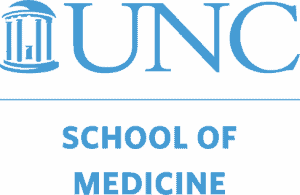 The University of North Carolina-Chapel Hill started its School of Medicine in 1879 and now has a lofty goal of becoming the country’s leading medical school. It’s well on its way. U.S. News and World Report rates this medical school #3 in the nation for Primary Care Education and #6 in NIH research funding.
The University of North Carolina-Chapel Hill started its School of Medicine in 1879 and now has a lofty goal of becoming the country’s leading medical school. It’s well on its way. U.S. News and World Report rates this medical school #3 in the nation for Primary Care Education and #6 in NIH research funding.
UNC offers M.D. degrees, as well as PhD, Medical Science Masters, and Allied Health programs. You can earn a dual degree in M.D./PhD, M.D./M.P.H. or M.D./M.B.A. The School of Medicine also supports PhD and M.S. programs in some of the top Allied Health medical careers in: Clinical Rehabilitation and Mental Health Counseling, Physician Assistant Studies, Clinical Laboratory Science, Physical Therapy, Radiologic Science, and more.
It’s hard to find a school with as strong of a research commitment than UNC, which receives on an annual basis, more than $1 billion in research funding, with 62% of its research conducted at Chapel Hill. The school ranks 6th in the U.S. for federal research funding. Research faculty includes two Nobel Laureates as well as members of national societies and medical academies.
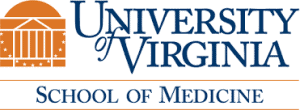 Thomas Jefferson established the University of Virginia School of Medicine in 1819, becoming the 10th medical school in the new country. Today, UVA SOM in Charlottesville, ranks in the top 50 of medical schools in the U.S.
Thomas Jefferson established the University of Virginia School of Medicine in 1819, becoming the 10th medical school in the new country. Today, UVA SOM in Charlottesville, ranks in the top 50 of medical schools in the U.S.
Medical education at this school includes the M.D. degree as well as others. You can also earn a PhD in a wide range of Biomedical Sciences a sampling of which includes Biochemistry and Molecular Genetics, Cell Biology, Neuroscience, and others. The school also awards a Master of Public Health (MPH) as well as a Master of Science in Clinical Research (MSCR). Over 800 students and fellows have the opportunity to train in various specialities and subspecialties through UVA’s Graduate Medical Education .
UVA SOM has a vibrant research program in a variety of affiliated centers. Studies in cancer, lupus, Covid vaccines, Parkinson’s disease, etc., and is considered one of the nation’s Top 10 Centers in Biomedical Research by the Hartwell Foundation. UVA SOM receives NIH funding ($146.3 million in 2019) and $23 million for the statewide, integrated Translational Health Research Institute of Virginia (iTHRIV).
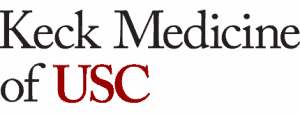 The Keck School of Medicine of USC, in Los Angeles, is named in honor of philanthropist W.M. Keck and is the oldest medical school in Southern California.
The Keck School of Medicine of USC, in Los Angeles, is named in honor of philanthropist W.M. Keck and is the oldest medical school in Southern California.
You’ll have three degree options with this program, in medicine (M.D.), Masters/PhD, and Post Doctoral. The four-year M.D. program concentrates on basic science and clinical studies in close association with faculty. PhD studies span across the biomedical spectrum including Cancer Biology and Genomics, Infectious Diseases, Immunology, and Pathogensis, MS degrees are available in Health and Biomedical Sciences, with some of the programs are offered online.
Research reaches over 26 academic departments and 30 research centers and institutes. Keck School of Medicine received $350 million in research grant monies. Ongoing studies are conducted in several signature programs with clinical investigations in cancer, biomedical imaging, cardiovascular and lung diseases. Six departments make up 10% in national NIH funding.
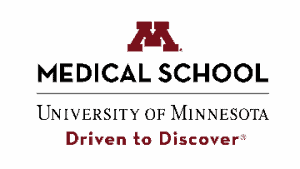 Minnesota’s Twin City’s campus is home to the University of Minnesota Medical School (MMS) which stands as one of the largest in the nation, featuring 27 departments, 29 degree programs, and 10 centers.
Minnesota’s Twin City’s campus is home to the University of Minnesota Medical School (MMS) which stands as one of the largest in the nation, featuring 27 departments, 29 degree programs, and 10 centers.
You can earn a M.D. and/or a M.D./PhD degree; or, you can pursue a PhD or M.S. in one of 10 Graduate Programs in Biomedical Sciences. All Biomedical Sciences PhD programs provide complete financial assistance (stipend, tuition, and benefits). In excess of 120 residency and fellowship programs are available in specialities such as Emergency Medicine, Internal Medicine, Neurology, Obstetrics and Gynecology, Surgery and others.
Ranking #28 in NIH research funding, research studies at MMS have included premiere studies in “first in the world” transplantations of kidney, bone marrow, and pancreas. The first cardiac pacemaker was implanted as a result of MMS clinical research. Researchers are actively working on treatment modalities and developing evidence-based medical options for COVID-19.
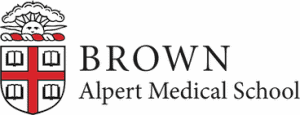 This private university in Providence, Rhode Island, stands as the third oldest medical school in New England, having been established in 1811. The school is now one of seven Ivy League schools of medicine.
This private university in Providence, Rhode Island, stands as the third oldest medical school in New England, having been established in 1811. The school is now one of seven Ivy League schools of medicine.
Degree options at the Warren Alpert Medical School includes medical studies, not only in primary care but in additional disciplines in Primary Care Population Medicine (PC-PM) in its M.D./ScM dual degree as well. You can also train as a Physician-Scientist in the MD/PhD studies in areas in Pathobiology, Biotechnology, Neuroscience, Ecology, Evolution, and Organismal Biology, and others. The U.S. News and World Report ranks Brown #19 in its Best Medical Schools in Primary Care.
Warren Alpert Medical School has been growing in the clinical research area, having grown 109% in outside funding since 2013. While, perhaps, not as much as other schools BAMS and its affiliated hospitals have received $216 million in NIH funds. The Brown Institute for Translational Science (BITS) is focused on critical issues in healthcare and accelerating information into quality patient care. The school supports 11 research centers investigating in a wide area.
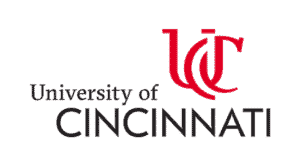 Ranked in the top 30% of Best Medical Schools by U.S. News and World Report, the University of Cincinnati (UC) has the oldest medical college (est. 1819) west of the Allegheny Mountains.
Ranked in the top 30% of Best Medical Schools by U.S. News and World Report, the University of Cincinnati (UC) has the oldest medical college (est. 1819) west of the Allegheny Mountains.
UC offers medical students primary care medical education as well as residencies and fellowships opportunities in various specialities. Several PhD degrees are part of the academic program in biomedical sciences, environmental and industrial hygiene, genetics, epidemiology, etc. A MD/PhD Medical Scientist Training Programwhich is a collaborative effort between UC’s College of Medicine and Cincinnati’s Children’s Hospital Medical Center.
Medical research at UC is considered in the top 40 of medical schools for research. The school supports four institutes for research in cancer, metabolic health, cardiovascular disease, and neurosciences. UC College of Medicine ranks #12 in the nation for NIH funding and receives $134 million in research grants and contract holdings.
 Following a remarkable $95 million gift from Marnix E. Heersink, M.D., the University of Alabama in Birmingham renamed its School of Medicine in his honor. Part of the University of Alabama System, UAB has sister campuses in Tuscaloosa, Huntsville, and Montgomery.
Following a remarkable $95 million gift from Marnix E. Heersink, M.D., the University of Alabama in Birmingham renamed its School of Medicine in his honor. Part of the University of Alabama System, UAB has sister campuses in Tuscaloosa, Huntsville, and Montgomery.
The UAB Heersink School of Medicine (HSM) provides programs for students interested in a primary care track, rural medicine, and dual MD/PhD degrees in Medical Scientist Training Program, business administration and Public Health. The school has a unique Blaze to MD Program for students who show promise to succeed in medical school, but need additional basic sciences preparation. Participation in the Blaze Program is made through the regular medical school admission process, with no additional application needed.
Students are given research opportunities beginning in the summer of their first year. The HSM research endeavors are supported by $256 million in NIH funding and ranks #8 among public schools receiving NIH research grants. Research areas include genomics, basic science, informatics, population health and disparities, and inflammation/infection/immunity.
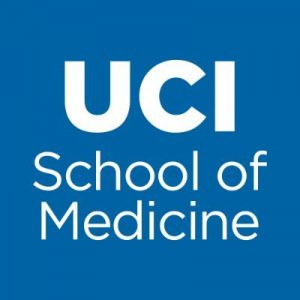 UC Irvine’s School of Medicine is one of U.S. News and World Report’s Best Medical Schools: Research in 2021 and #41 in its Best Medical Schools: Primary Care.
UC Irvine’s School of Medicine is one of U.S. News and World Report’s Best Medical Schools: Research in 2021 and #41 in its Best Medical Schools: Primary Care.
In addition to the primary M.D. degree, you have the option to earn a MD/PhD in Medical Scientist Training Program (MSTP), MD/MPH, MD/MBA in collaboration with UCI’s Paul Merage School of Business, or the MS in Biomedical and Translational Science (MS BATS). UCI supports almost 700 residents and fellowships in its 64 accredited programs that represents the majority of medical specialities and subspecialties.
UCI has robust research programs in 11 specialities and is active in basic science, clinical and translational research studies. In 2021, the school received a record $592 million in NIH funding to support investigational studies. The School of Medicine’s nearly 700 faculty collaborate in primary research areas in a variety of diseases, conditions and innovations.
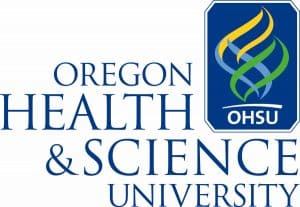 With its roots as the first medical education program in Oregon (1887) OHSU has developed into one of the top 5 Best Medical Schools in Primary Care by U.S. News and World Report.
With its roots as the first medical education program in Oregon (1887) OHSU has developed into one of the top 5 Best Medical Schools in Primary Care by U.S. News and World Report.
Located in Portland, OR, OHSU provides seven programs covering a range of medical education. Among the academic and training programs offered are the M.D. in Primary Care as well dual degree options and specialty opportunities, resulting in the awarding of MD/PhD, MD/MPH, Oral & Maxillofacial Surgery (OMS), MD/Physician Scientist, and Pathology Year Experience. The Oregon FIRST program specially addresses the issues of Oregon’s medically underserved population.
OHSU’s collaborative regional research studies have garnered $384 million in research funding and national recognition in professional journals. Among the innovations originating from OHSU research was the first West Nile virus vaccine, genetic therapies for eye conditions, creation of the first successful artificial heart value, and others.
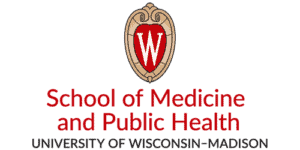 The School of Medicine and Public Health at the University of Wisconsin covers all the bases when it comes to educating healthcare professionals.
The School of Medicine and Public Health at the University of Wisconsin covers all the bases when it comes to educating healthcare professionals.
UWM offers options of choosing your medical career path with a M.D. and a Medical Scientist Training Program M.D./PhD degree as well as a M.D./MPH. The school also provides several M.S./PhD degrees in a range of scientific studies. Other professional career training is available in physical therapy (DPT), a stand alone public health degree (MPH), physician assistant studies (MPAS), or genetic counseling (MGCS). Two two special programs are available with the Wisconsin Academy for Rural Medicine (WARM) and the Training in Urban Medicine and Public Health (TRIUMPH) dedicated to training for medical service in rural and underserved communities.
You’ll find a vigorous research program at this school with a history of innovation in basic science, clinical, and public health science studies. With a research history that includes three Nobel Laureates, studies at UWM are generously funded (expending $1.3 billion 2019-20) ranking the school #8 in public school.
 The University of Rochester School of Medicine and Dentistry (URSMD) in New York ranks in the top 15 of U.S. News and World Report’s Best Medical Schools: Primary Care and in the top 40 in Best Medical School: Research.
The University of Rochester School of Medicine and Dentistry (URSMD) in New York ranks in the top 15 of U.S. News and World Report’s Best Medical Schools: Primary Care and in the top 40 in Best Medical School: Research.
Offering Medical Education, this school utilizes the “Double Helix Curriculum—Translations and Transitions” for its M.D. and M.D./PhD (MSTP) students. This methods emphasizes a Biophysical Model of collaboration, technology, and professionalism. URSMD has more than 30 PhD and Masters degrees in health sciences and biomedical training. The school’s Master in Public Health (MPH) is offered on-campus and online hybrid. You may also complete your Residency/Fellowship in one of the school’s 80 medical, surgical, or hospital disciplines.
More than 3,000 professionals are engaged in investigational studies in neuroscience, pediatrics, RNA biology, cancer, orthopaedics, immunity and infection, etc. Almost 700 graduate students and postdoctoral students are in training for research.
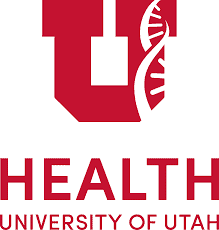 When you first open the University of Utah’s School of Medicine website, you learn the school’s pride in the U.S. News and World Report’s Best Medical Schools ranking for Primary Care (#14), Research (#15), and Physician Assistant program (#2).
When you first open the University of Utah’s School of Medicine website, you learn the school’s pride in the U.S. News and World Report’s Best Medical Schools ranking for Primary Care (#14), Research (#15), and Physician Assistant program (#2).
Future physicians are trained using the Exceptional Learning Experience model which emphasizes self-motivation, patient centered, evidence-based medicine as a foundation. The SOM’s commitment to this transformational curriculum creates a collaborative learning environment. This method is used in the school’s dual MD/PhD, MD?MSPH or MD/MPH, or MD/MBA degrees. Residency and Fellowship programs are available in numerous specialities. You can also received a degree through the MS in Laboratory Science focusing on laboratory science and medical science offered in either a biomedical research or clinical tracks.
This is the only academic medical center in the Mountain West area and its research efforts extend to clinical trials as well as research studies in genetics, ophthalmology, oncology, cardiovascular, among others. The innovative research program receives nearly $246 million on an annual basis in support.
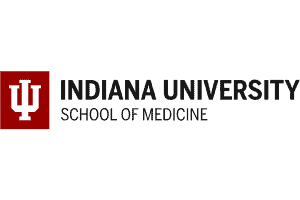 Indiana University School of Medicine is the largest medical school in the country, with five medical education centers across Indiana. The IUSOM operates 5 basic science departments as well as 20 clinical departments. The school implemented a new medical education curriculum in 2020 designed to prepare students for the new healthcare models in the U.S.
Indiana University School of Medicine is the largest medical school in the country, with five medical education centers across Indiana. The IUSOM operates 5 basic science departments as well as 20 clinical departments. The school implemented a new medical education curriculum in 2020 designed to prepare students for the new healthcare models in the U.S.
The four-year medical degree emphasizes clinical training, integrating clinical practice with basic science studies in the first two years with the third and fourth years exclusively concentrating on clinical experiences. The required third year clerkships are clinical rotations in a variety of specialities. Dual degrees are available to pair your MD with a PhD (Medical Science Training Program), masters degrees in business administration, public health, biomedicine, or MS or MA studies in bioethics. Recognizing the stress medical students may have, IU offers free mental health and counseling services to all students, residents, or fellows on each IU campus.
IUSOM covers all the bases in medical research with its basic and clinical departments, institutes, research centers, and clinical trials. The research program at Indiana University ranks 5th in National Institute on Aging Funding, 6th in U .S. Departments of Pediatrics, and 129th out of 145 medical schools receiving NIH funding ($213 million.)
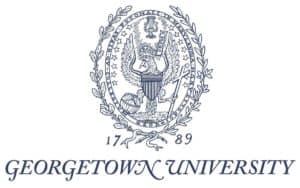 Washington D.C.’s Georgetown University School of Medicine has been training physicians for 150 years with a curriculum dedicated to cura personalis, or the treatment and care of a patient’s mental and spiritual well being. This urban school has a strong reputation and is ranked in the nation’s top 100 Best Medical Schools: Primary Care and #55 in Best Medical Schools: Research by U.S. News and World Report. Georgetown University SOM has a rigorous admission process and admits only 15 out of every 100 applicants.
Washington D.C.’s Georgetown University School of Medicine has been training physicians for 150 years with a curriculum dedicated to cura personalis, or the treatment and care of a patient’s mental and spiritual well being. This urban school has a strong reputation and is ranked in the nation’s top 100 Best Medical Schools: Primary Care and #55 in Best Medical Schools: Research by U.S. News and World Report. Georgetown University SOM has a rigorous admission process and admits only 15 out of every 100 applicants.
A bit unconventional, when compared to some medical schools, the curriculum at Georgetown is a “Journeys Curriculum” with three phases: Foundational, Core Clinical, and Advanced Clinical. The first and second year Foundational phase introduces scientific foundations and patient care, along with anatomical studies. The third year of study involves clinical Clerkships with the fourth year dedicated to two Acting Internships (one required, one selective).
Biomedical research at Georgetown covers over 20 institutes and centers, 6 basic science departments 19 clinical departments. Research at Georgetown Medical Schools concentrates around four research areas: cancer, population health, global health, and mind and brain. Students are able to conduct research at any level of their education.
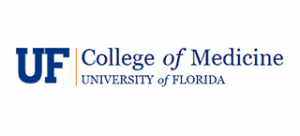 The College of Medicine at the University of Florida is the largest college in the UF academic health center and boasts thousands of students, staff, and faculty.
The College of Medicine at the University of Florida is the largest college in the UF academic health center and boasts thousands of students, staff, and faculty.
Medical education at UF COM includes both a U.S. News and World Report’s top ranked MD degree in over 100 medical general, specialities and subspecialties. as well as a MD/PhD or MS in biomedical science. The College of Medicine also provides a Physician Assistant program. Students can enroll in Masters and PhD programs through the College of Medicine. Vigorous Residency and Fellowship opportunities in a wealth of specialities from Anesthesia to Urology.
UF COM has an active, nationally recognized research arm and is ranked #51 in the country by U.S. News and World Report and in the top 15 in public research institutions. The school has a collaborative study in Alzheimer’s disease with Mount Sinai Hospital, diabetes, muscular dystrophy, chronic pancreatitis, cancer, and diabetes, among the investigations. UF supports 9 research institutes concentrating on genetics, aging, brain and neurological, cancer, and more.
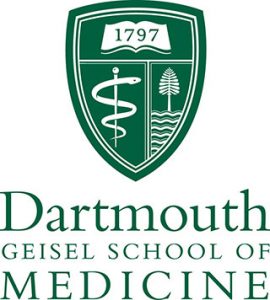 Dartmouth College’s Geisel School of Medicine is the fourth oldest medical school in the U.S. (est. 1797) and a school of several firsts, such as clinical X-rays in the U.S. and use of a stethoscope in medical education. This Hanover, NH school ranks #24 in U.S. News and World Report’s Best Medical Schools: Primary Care.
Dartmouth College’s Geisel School of Medicine is the fourth oldest medical school in the U.S. (est. 1797) and a school of several firsts, such as clinical X-rays in the U.S. and use of a stethoscope in medical education. This Hanover, NH school ranks #24 in U.S. News and World Report’s Best Medical Schools: Primary Care.
The school awards six degrees covering the spectrum in biomedical, public health, and health research. You can earn an MD which offers first year simulated clinical experiences, a MD/PhD designed to train the physician-scientist, and a highly competitive MD/MBA. A MPH/MS through The Dartmouth Institute is offered and a MS/PhD through The Frank J. Guarini School of Graduate and Advanced studies. PhD/MS in Quantitative Biomedical Sciences (QBS), blending health care, biomedicine, biostatistics, big data, and population health.
As with other medical schools of this caliber, Basic science research plays an important role in the Geisel School of Medicine as does Primary Care research. The Geisel School of Medicine counts numerous institutes and centers in its clinical and research commitment. U.S. News and World Report ranks this at #45 in its Best Medical Schools: Research.
 The University of Iowa’s Carver College of Medicine is rightfully proud of its national recognition by U.S. News and World Report’s Best Medical School rankings. Among the UI CCM divisions recognized are Primary Care (#22), Family Medicine (#14), Internal Medicine (#27), and Research (#39). The college ranks equally high in other categories as well.
The University of Iowa’s Carver College of Medicine is rightfully proud of its national recognition by U.S. News and World Report’s Best Medical School rankings. Among the UI CCM divisions recognized are Primary Care (#22), Family Medicine (#14), Internal Medicine (#27), and Research (#39). The college ranks equally high in other categories as well.
This college offers over 15 professional degrees. Among those are a MD, MD/PhD (MSTP), PhD (Biomedical Science or Physical Rehabilitation Science), and combined degrees in MD/MBA (partnership with UI Tippie College of Business) and a MD/JD (in collaboration with the UI College of Law). Carver College of Medicine also partners with UI’s College of Public Health a MD/MPH. Master of Physician Assistant Studies (MPAS) as well as masters studies in Clinical Nutrition, along with Professional Training Programs and others.
Iowa University ranks in the top 40 of U.S. News and World Report’s Best Medical Schools: Research and receives over $247 million in external research funding. The medical school supports multiple institutes and research centers in an array of medical areas as gene therapy, macular degeneration, oncology, etc. Carver Medical School has a robust clinical trials program, as well.
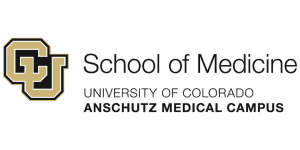 With a focus on medical education, research, patient care, and community health, the highly ranked University of Colorado School of Medicine (UC SOM) Anschutz Medical Campus offers seven professional degrees as well as the Doctor of Medicine on the PhD and masters’ levels. That’s quite a change from its opening in 1883 with two students and two professors.
With a focus on medical education, research, patient care, and community health, the highly ranked University of Colorado School of Medicine (UC SOM) Anschutz Medical Campus offers seven professional degrees as well as the Doctor of Medicine on the PhD and masters’ levels. That’s quite a change from its opening in 1883 with two students and two professors.
UC SOM, in 2020-21, in partnership with Colorado State University, opened a medical school branch in Fort Collins. The revised, Longitudinal Curriculum (2020), includes elective track options in research, global, or rural health. Joint degrees exist in a Medical Scientist Training Program, MD/MBA, MD/MPH, MD/MS (Bioengineering). PhD programs are available in Biomedical Sciences, and a Doctor of Physical Therapy. The program has Residency and Fellowship opportunities as well.
You’ll find substantial research studies at UC SOM in numerous categories. Among the active investigations are studies in hematology, oncology, infectious diseases, pain and inflammation, genetics, and many more. U.S. News and World Report rates UC SOM #27 in Best Medical Schools: Research.
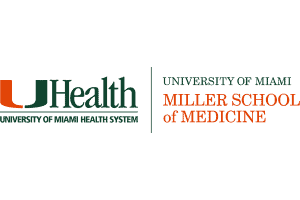 UM’s Miller School of Medicine has been education physicians and healthcare professionals since the 1950s. As with most other medical schools, the Miller SOM offers several medical programs including the Doctor of Medicine, and a dual Medical Scientist Training Program MD/PhD research option. You can choose a MD/MPH, a MD/JD offered in partnership with UM’s School of Law, MD/MBA with UM’s Herbert Business School. If genomics is your interest, you could earn a MD/MS in Genomic Medicine Uniquely, this medical school also awards degrees in MD/MA in International Administration using academic and theoretical studies, this degree looks at security problems and emergency management strategies. A MD/MA in Medical Humanities and Bioethics focusing on the historical, ethical, legal, as well as cultural contexts of medicine is offered.
UM’s Miller School of Medicine has been education physicians and healthcare professionals since the 1950s. As with most other medical schools, the Miller SOM offers several medical programs including the Doctor of Medicine, and a dual Medical Scientist Training Program MD/PhD research option. You can choose a MD/MPH, a MD/JD offered in partnership with UM’s School of Law, MD/MBA with UM’s Herbert Business School. If genomics is your interest, you could earn a MD/MS in Genomic Medicine Uniquely, this medical school also awards degrees in MD/MA in International Administration using academic and theoretical studies, this degree looks at security problems and emergency management strategies. A MD/MA in Medical Humanities and Bioethics focusing on the historical, ethical, legal, as well as cultural contexts of medicine is offered.
Through its Research Departments, UM SOM supports discoveries in its institutes and research centers. With Clinical and Translational Research, Basic Science Research, and has several, active Clinical Trials programs. NIH awarded UM SOM $149.5 million in 2019 and ranks #1 in Florida for research funding.
 UC Davis School of Medicine has been graduating physicians and health professionals for more than 50 years and is recognized as one of the nation’s Best Medical Schools in Research and Primary Care by U.S. News and World Report.
UC Davis School of Medicine has been graduating physicians and health professionals for more than 50 years and is recognized as one of the nation’s Best Medical Schools in Research and Primary Care by U.S. News and World Report.
Several degree options are available in the Doctor of Medicine featuring a revised curriculum known as the I-EXPLORE (Integrated Explorative Patient and Learner ORiented Education) which has its foundation in Biomedical Science, Clinical, and Health Systems studies. A dual degree is available in a fully funded MD/PhD for students who demonstrate a commitment to basic and clinical research (students in this program are fully funded). The MD/MPH is an interdisciplinary degree partnership with various UC Davis schools as well as departments of public health and nonprofit agencies. Stand alone masters programs include Health Informatics and Public Health.
Receipt of over $315 million in research funding, UC Davis SOM has active, ongoing studies in its Stem Cell Program, Clinical and Translational Science, Comprehensive Cancer Center, Alzheimer’s Disease Center, and others. Medical Students have research opportunities available through independent study, summer experience, and mentorships.
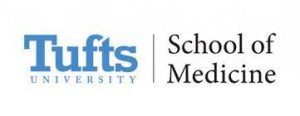 Tufts University School of Medicine in Boston, MA, dates to 1893 when it opened with 25% of the first class comprised of women, a rare opportunity for the times. U.S. News and World Report ranks Tufts in its Best Medical Schools: Primary Care (#51) and Research (#55).
Tufts University School of Medicine in Boston, MA, dates to 1893 when it opened with 25% of the first class comprised of women, a rare opportunity for the times. U.S. News and World Report ranks Tufts in its Best Medical Schools: Primary Care (#51) and Research (#55).
Tufts has an impressive catalog of academic programs. Featuring programs in the Doctor of Medicine and the Maine Track MD (a unique degree for students whose home may be in Maine, this degree concentrates on rural medicine in Maine and provides an immersive experience for students.) There’s a MD/MSTP option for students with a strong research interest. Six PhD degrees exist in biomedical science in areas of Genetics, Immunology, Neuroscience, Molecular Microbiology, and Cell, Molecular and Developmental Biology. A MPH is offered and a MS in Health Informatics and Analytics (offered online).
With seven research areas, Tufts has a strong commitment to research and sponsors four biomedical research labs and several centers in a variety of clinical areas. Five Core Research Facilities round out the department.
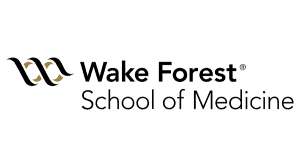 While perhaps not part of the North Carolina Research Triangle as such, Wake Forest School of Medicine ranks as one of the nation’s top primary care and research medical schools.
While perhaps not part of the North Carolina Research Triangle as such, Wake Forest School of Medicine ranks as one of the nation’s top primary care and research medical schools.
The MD program features an advanced curriculum, “Wake Ready!” which emphasizes an individualized learning approach and introduces clinical experience early and continued throughout the program. WF SOM established in 1969, a Physician Assistant Program, you can complete in 24 months. Over 700 residents and fellows participate in the in 99 accredited and/or unaccredited Residency and Fellowships in hospitals, clinics, and primary or specialty care. Medical education at WF SOM includes Biomedical Graduate Programs degrees such as PhD programs in Biochemistry and Molecular Biology, Cancer Biology PhD, and Biomedical Engineering PhD and MS as well as many others.
Medical Research is robust and covers a wide range of investigational areas. With 16 Institutes and Centers, researchers work in oncology, cardiovascular, pediatric trauma, geriatrics, etc. WF has an enviable, institutionally shared resources infrastructure and ongoing clinical trials. The WF faculty interests range from basic science, preclinical, and clinical researchers.
 Recently, UMass Medical School changed its name to the UMass Chan Medical School and the school celebrated with a #10 ranking in U.S. News and World Report’s Best Medical Schools: Primary Care category.
Recently, UMass Medical School changed its name to the UMass Chan Medical School and the school celebrated with a #10 ranking in U.S. News and World Report’s Best Medical Schools: Primary Care category.
The medical school offers the MD curriculum which introduces patient care interaction in the first few weeks and is dedicated to providing you sound clinical foundations. Additional degrees are available: MD/PhD Medical Scientist Training Program which is a collaboration between the UMass Chan Medical School and Morningside Graduate School of Biomedical Sciences. The school has a program in Population-Based Urban and Rural Community Health (PURCH) dedicated to addressing health for the underserved urban and rural populations. A dual MD/MBA degree is available and is a joint effort with UMass Lowell.
This school has a very robust research commitment with ongoing research in nearly, if not all, departments and an impressive roster of programs, institutes, and centers. With $254 million per year in funding, UMass Chan Medical School research efforts include a Noble Laureate, five Howard Hughes Medical Institute Investigators, two members of the National Academy of Sciences and more.
 Beginning in 1807 the College of Medicine was the first chartered, public medical school in the U.S. T0day, the University of Maryland’s School of Medicine (UM SOM) is a rapidly growing biomedical research institution and 2,500 students, residents, and fellows. U.S. News and World Report ranks this school #16 in its Best Medical Schools: Primary Care and #27 in Research.
Beginning in 1807 the College of Medicine was the first chartered, public medical school in the U.S. T0day, the University of Maryland’s School of Medicine (UM SOM) is a rapidly growing biomedical research institution and 2,500 students, residents, and fellows. U.S. News and World Report ranks this school #16 in its Best Medical Schools: Primary Care and #27 in Research.
While more than half of the school’s students are pursuing the MD degree, UM SOM also offers dual degrees in MD/PhD (Medical Scientist Training Program) and a MD/MPH. UM SOM has a dedication to allied health professions through its Graduate Program in Life Sciences which features PhD and MS studies in several areas, with examples being in Epidemiology and Human Genetics, Neuroscience, Physical Rehabilitation Science, Biochemistry, and others.
With state-of-the-art research facilities (nearly 2.5 million square feet), $563 million in research funding, and 3,500 faculty, the research focus of the school is formidable. Investigative concentrations in patient-oriented studies. Among those research projects are studies in Cardiovascular, Stem Cell Research, Genomics, Cancer, Global Health and Vaccinology, and Basic Sciences. Clinical Trials are provided through the General Clinical Research Center (GCRC)
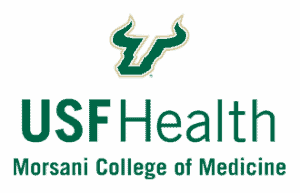 Morsani College of Medicine of the University of South Florida is located in Tampa, Florida and has a goal devoted to improving collaborative medical education as well as scientific research.
Morsani College of Medicine of the University of South Florida is located in Tampa, Florida and has a goal devoted to improving collaborative medical education as well as scientific research.
You’ll have three options for your MD at USF MCM. The MD Core which is an integrated curriculum in basic science and clinical experiences which are introduced early in your studies. If your interests are in becoming a physician leader, you’ll want to explore the schools SELECT program (Scholarly Excellence. Leadership Experiences. Collaborative Training.) You can also choose the MD/PhD program designed for the future physician-scientist. Also offers are studies in the Physician Assistant Program, MS or PhD in Medical Engineering (in conjunction with USF College of Engineering) and Residencis and Fellowships. The medical school also has an Athletic Training Program.
If research is your goal, the Morsani College of Medicine is active in research studies in basic sciences, translational, and clinical investigations. The school encourages collaboration between departments and 95% of medical students conduct research.

